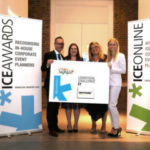The thing about the suddenly high-profile Zika virus is that it’s just one of many mosquito-borne pathogens that are a particular scourge in the developing world. And sometimes, it’s more effective to go after the mosquito. In this case, Aedes aegypti, a.k.a. the yellow-fever mosquito — which, as its nickname attests, is spreading a lot more than Zika, including dengue, chikungunya, and, yes, yellow fever.
How to fight Aedes aegypti? With a meeting, of course. The Summit on the Aedes aegypti Crisis in the Americas: Joining Together to Address a Grand Challenge was held at the Ruth Cardoso Cultural and Exhibition Center in Maceió, Brazil, on March 13. Co-hosted by the Entomological Society of America (ESA) and Sociedade Entomológica do Brasil (SEB), the one-day conference was in the works before Zika first made headlines early this year. Convene talked to C. David Gammel, CAE, ESA’s executive director, a few weeks in advance of the program about how and why it came about.
How long has this been in the pipeline?
We’ve been working on this summit for at least a year and half, perhaps a bit longer. Just dengue and chikungunya fever are huge public-health issues globally. Zika coming on the scene at the beginning of the year really heightened awareness of this mosquito, but it dovetails quite nicely with what the original purpose of the meeting was.
Who are you expecting to attend?
It’s an invitation-only meeting. We’re probably going to have around 40 or 50 people there. It’s going to be a mix of scientists working on mosquitoes, public-health officials from quite a few countries, folks from NGOs that work in this area, some industry representatives — in our attempt to get everyone together in the same room and talk about the opportunities in research and in implementation to help control this mosquito more effectively in the Americas.
Since Zika has been in the news, have you changed or adjusted the program in any way?
From a content perspective, it’s essentially the same. We have to talk about the same things whether we’re talking about dengue or Zika, for the most part. We did lose some speakers that had agreed to participate, and then their organizations began their emergency response to Zika and they got pulled off. We have had to make some rapid adjustments to the meeting and substitute people here and there, which has been a little challenging, but we got through that.
How did the summit come to be in Brazil in the first place?
The summit’s being held just before the Brazilian Congress of Entomology, which is also co-located with the Latin American Congress of Entomology this year. We felt we would have a critical mass of entomologists already there, and it just made it a nice opportunity to tack on a program and look at this mosquito. It’s going to be in the center of Brazil, which is actually one of the outbreak areas for Zika, so that’s kind of interesting from the perspective of what we’ll be talking about.
Not that the Zika outbreak is a good thing, but for the purposes of publicizing the work you’re trying to do, is it helpful or useful to have it getting so much attention?
The way I look at it is that Zika is a symptom of the problem of this mosquito. The mosquito is not native to the Americas; it’s from Africa, then it spread around the world through global trade primarily. It’s going to be a pernicious problem whether Zika was here or not. I think Zika has created a lot of political demand and will to deal with Zika specifically, but that will have a halo effect on supporting control of this mosquito, which will benefit dengue-control efforts, chikungunya, yellow-fever efforts.
Why is a live conference the best format for addressing this problem?
Any time you need people to collaborate and to agree on something of this level of importance, or where there will be sometimes strong differences of opinion over the research or over the expectation of how it should go, those conversations are best done in person. I can’t imagine trying to do this through some kind of online conference.
The irony of people who are tops in their field, whether it’s in government or science or industry, is that it’s easier to have them physically be there than it is to get them on a conference call in some cases. Trying to get all these people on a conference call at the same time is super-challenging. If the issue’s important enough, people will be willing to travel. You get them on site, they’re unplugged, out of their organization a bit, and can really focus on the issue. That’s one of the real values of in-person meetings — getting people out of the day-to-day flow, so that they’re free to work on this bigger issue that you want them to talk about.



